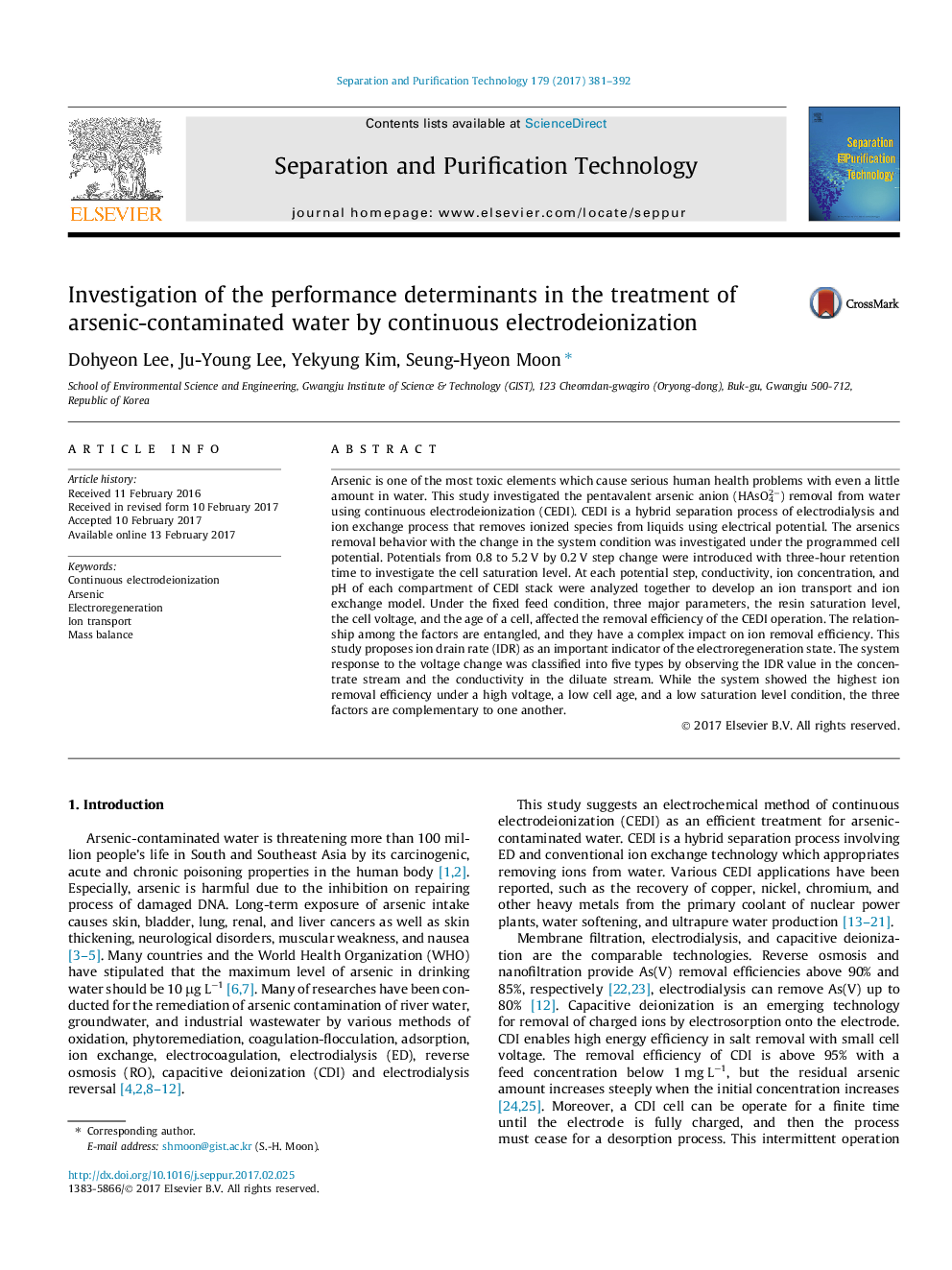| Article ID | Journal | Published Year | Pages | File Type |
|---|---|---|---|---|
| 4990093 | Separation and Purification Technology | 2017 | 12 Pages |
Abstract
Arsenic is one of the most toxic elements which cause serious human health problems with even a little amount in water. This study investigated the pentavalent arsenic anion (HAsO42â) removal from water using continuous electrodeionization (CEDI). CEDI is a hybrid separation process of electrodialysis and ion exchange process that removes ionized species from liquids using electrical potential. The arsenics removal behavior with the change in the system condition was investigated under the programmed cell potential. Potentials from 0.8 to 5.2Â V by 0.2Â V step change were introduced with three-hour retention time to investigate the cell saturation level. At each potential step, conductivity, ion concentration, and pH of each compartment of CEDI stack were analyzed together to develop an ion transport and ion exchange model. Under the fixed feed condition, three major parameters, the resin saturation level, the cell voltage, and the age of a cell, affected the removal efficiency of the CEDI operation. The relationship among the factors are entangled, and they have a complex impact on ion removal efficiency. This study proposes ion drain rate (IDR) as an important indicator of the electroregeneration state. The system response to the voltage change was classified into five types by observing the IDR value in the concentrate stream and the conductivity in the diluate stream. While the system showed the highest ion removal efficiency under a high voltage, a low cell age, and a low saturation level condition, the three factors are complementary to one another.
Related Topics
Physical Sciences and Engineering
Chemical Engineering
Filtration and Separation
Authors
Dohyeon Lee, Ju-Young Lee, Yekyung Kim, Seung-Hyeon Moon,
